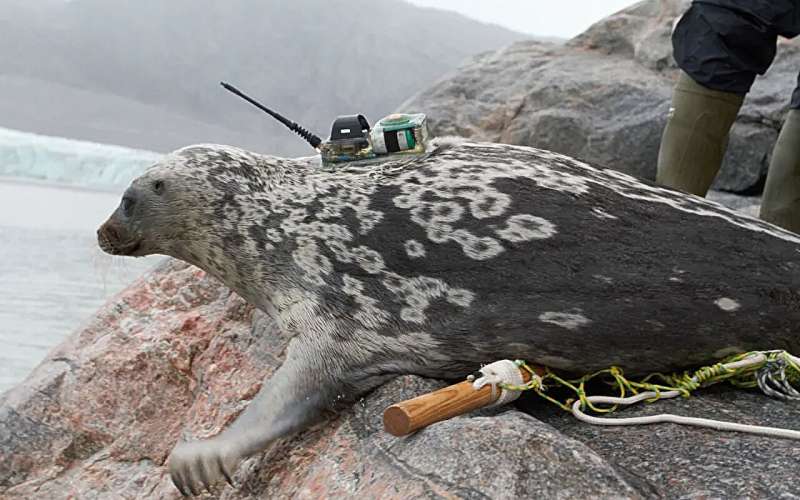This article has been reviewed according to Science X's editorial process and policies. Editors have highlighted the following attributes while ensuring the content's credibility:
fact-checked
peer-reviewed publication
trusted source
proofread
A new type of ringed seal described in West Greenland

The Arctic marine ecosystem is undergoing substantial changes, currently warming at rates well above the global average and seeing an increase in anthropogenic activities. Yet, due to the unexplored "hidden" nature of the Arctic, uncertainties remain on how to best manage and conserve Arctic organisms and natural resources.
Together with their international collaborators, researchers from Institute of Biotechnology at University of Helsinki described a new type of ringed seal that inhabits Ilulissat Icefjord, a UNESCO world heritage site in West Greenland. The seals in the icefjord look different from other ringed seals—they are much larger and have very distinctive coloration and patterning of their coat. Local hunters have been aware of this distinctiveness for generations and have a special name for the seals from this region—they call them Kangiat (those from Kangia).
The study is published in the journal Molecular Ecology "An evolutionarily distinct ringed seal in the Ilulissat Icefjord."
The multidisciplinary approach combined state-of-the-art genome sequencing, telemetry "tagging," and aerial surveys to investigate the genetic, ecological, and behavioral uniqueness of the Kangia ringed seal. The telemetry and aerial survey data show that Kangia ringed seals only number a few thousand animals and they stay within the icefjord, occurring at high densities.
These observations contrast with those for Arctic ringed seals, which usually have a larger population size and more mobile, typically dispersing thousands of kilometers across the Arctic on seasonal foraging migrations.
The research at University of Helsinki focused on genomic analyses of different ringed seal populations. According to Ari Löytynoja, who led the analyses, the results demonstrate that the Kangia seal has been isolated from other ringed seals for more than 100 thousand years.
"During that period, certain genes and genomic regions in the Kangia ringed seals evolved and gave the seals their unique coat coloration, larger body size, and adaptations to their special fjord habitat. Although the adaptations suit the lower salt concentration in the icefjord, it remains unclear how and where the Kangia seals became isolated and obtained their unique biological characteristics," he explains.
The documentation of a unique ringed seal ecotype emphasizes the need for wider research on the Arctic. Ilulissat is only one of the Arctic fjords and the Kangia ringed seals may just be the tip of the iceberg. Better understanding Arctic biodiversity and the impacts of the changing climate and anthropogenic activities is vital. Without this knowledge, biologically unique natural populations and resources cannot be protected and conserved.
More information: Aqqalu Rosing‐Asvid et al, An evolutionarily distinct ringed seal in the Ilulissat Icefjord, Molecular Ecology (2023). DOI: 10.1111/mec.17163
Journal information: Molecular Ecology
Provided by University of Helsinki

















